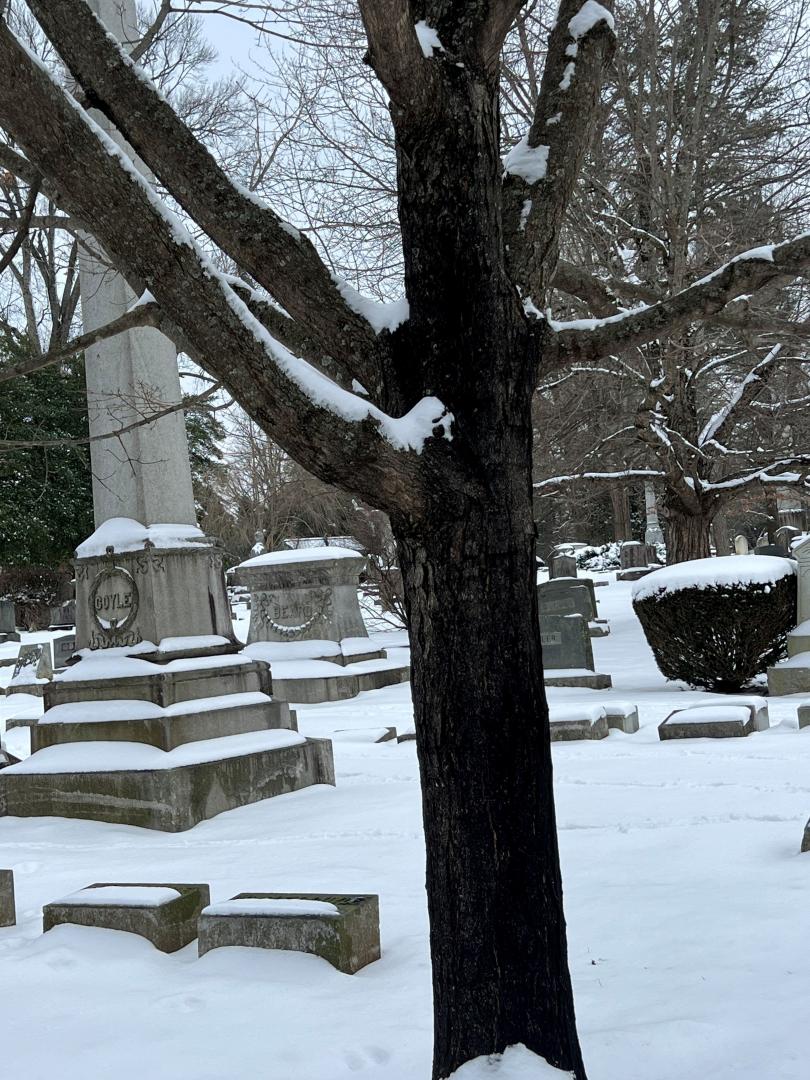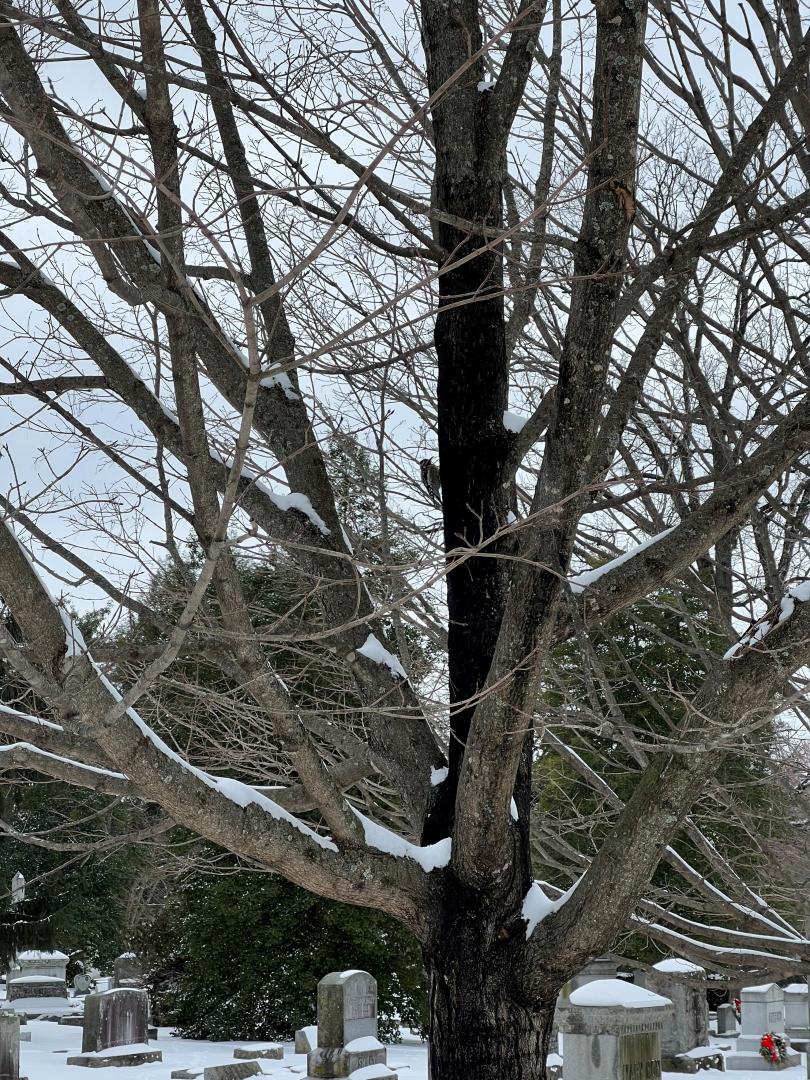Diagnosing the Cause of a Tree's Decline: Disease, Pest, or Environmental
The most common answer is a combination of all three! Only when a problem is noticed in the very early stages can the exact cause be determined. By the time I am called in to observe a "sick" tree, there are usually several problems causing various symptoms that fit into the spiral of decline. The sugar maple in the photo has a black mold covering most of its main trunk. Although the tree has likely been suffering dieback in the upper canopy for many years due to drought stress and root zone compaction, the black mold draws attention. The black mold is not killing the tree but the mold growth indicates that the tree is slowly declining. As the tree struggles to survive, the bark exudes sugary sap which runs down the bark and supports the mold growth. Insects are drawn to and feed on the excess sap and decaying wood. Birds, like sapsuckers, begin to frequent the tree to feed on these insects and further damage the bark. Foliar diseases will become more likely and the photosynthetic ability of the tree will be reduced. The roots will suffer as periods of alternating extreme moisture and drought become the norm as our environment warms and our summers become longer. The maple simply cannot protect itself or bounce back. The decline will lead to tree death without early intervention.


Latest Topics
Mature Trees are Struggling. Here are a few signs...
Mature Trees are Struggling. Here are a few reasons why...
Risk is in the Eye of the Homeowner, Part 1
Diagnosing the Cause of a Tree's Decline: Disease, Pest, or Environmental
DIY Tree Planting Part 3: Proper planting is critical.
View All…